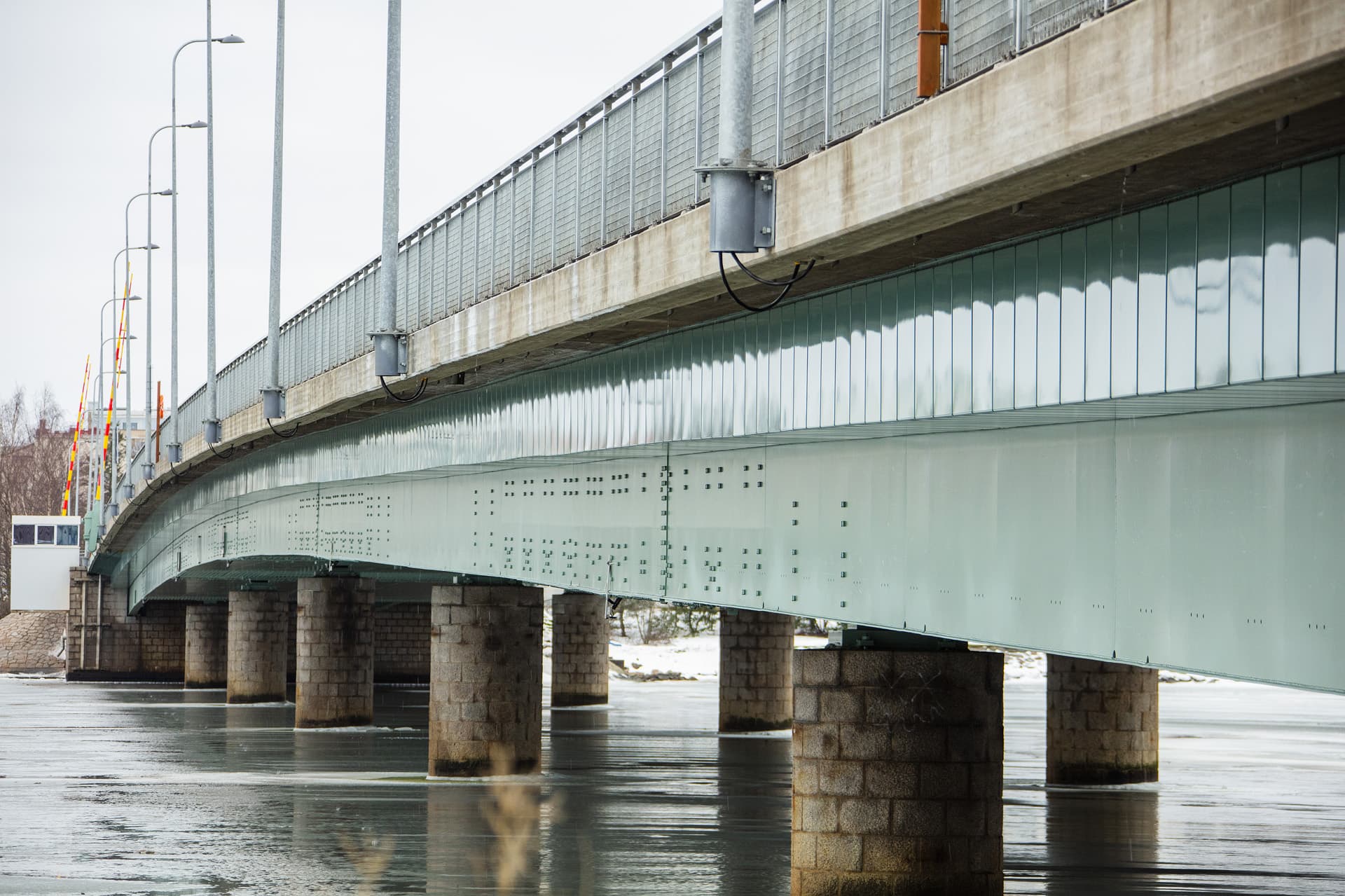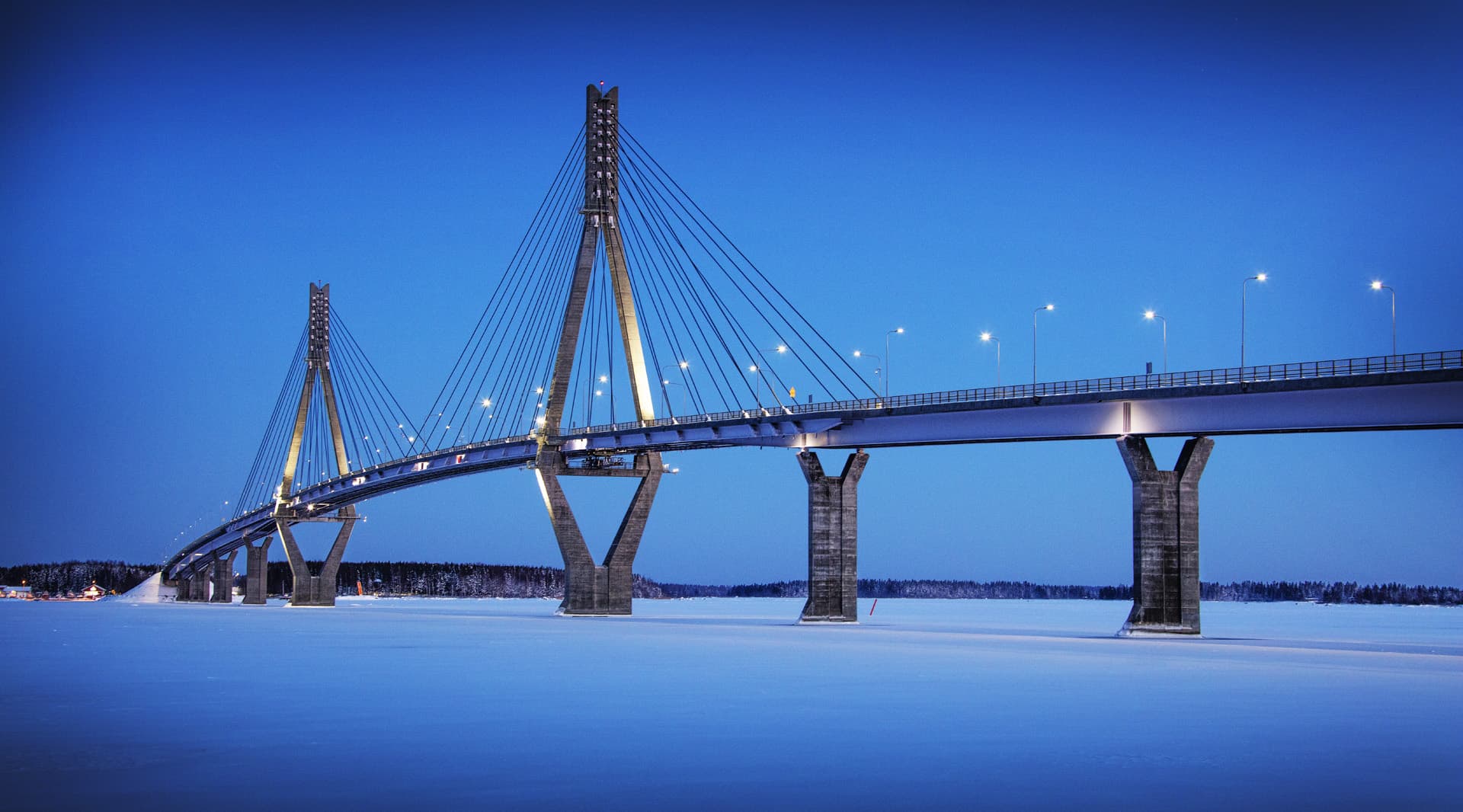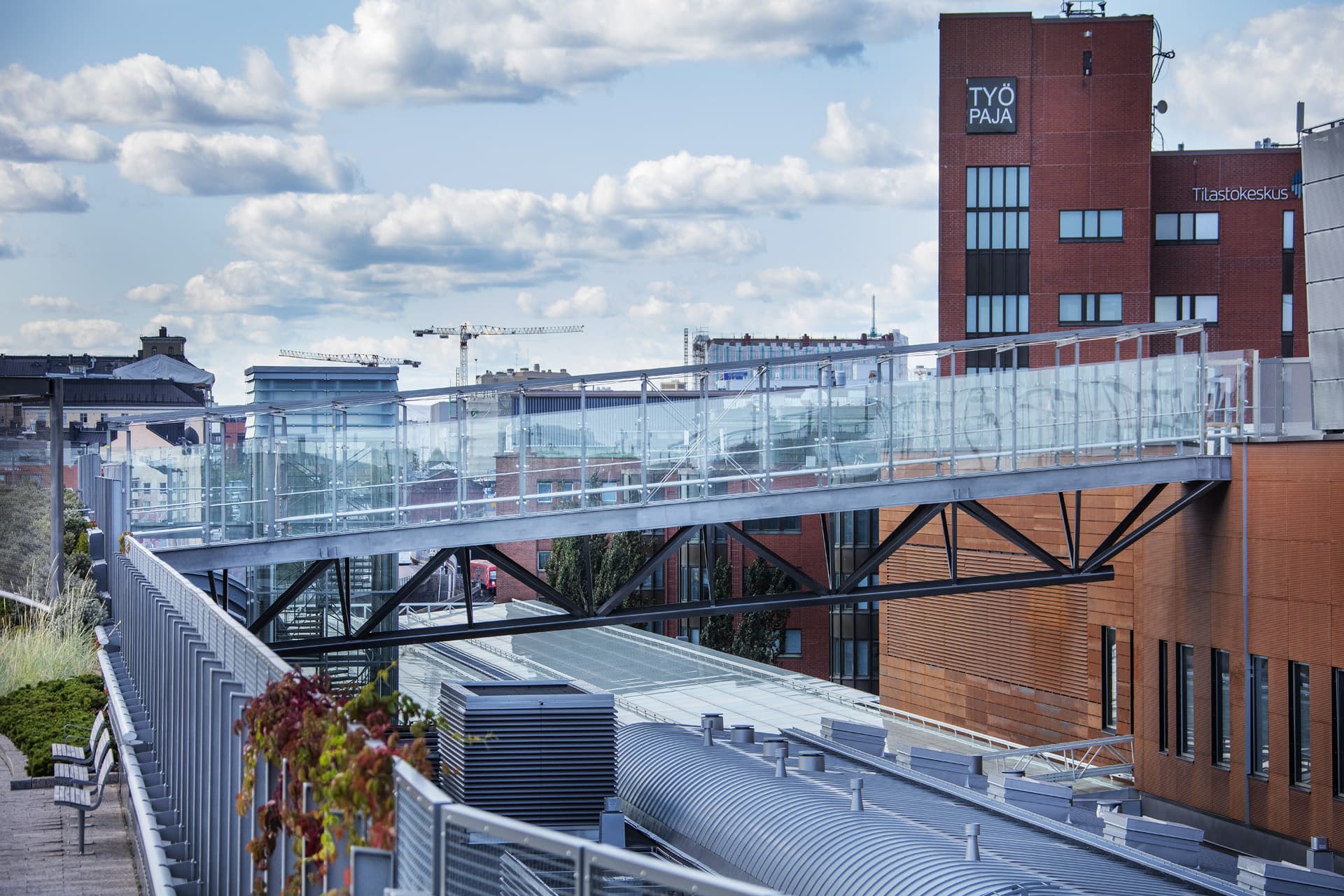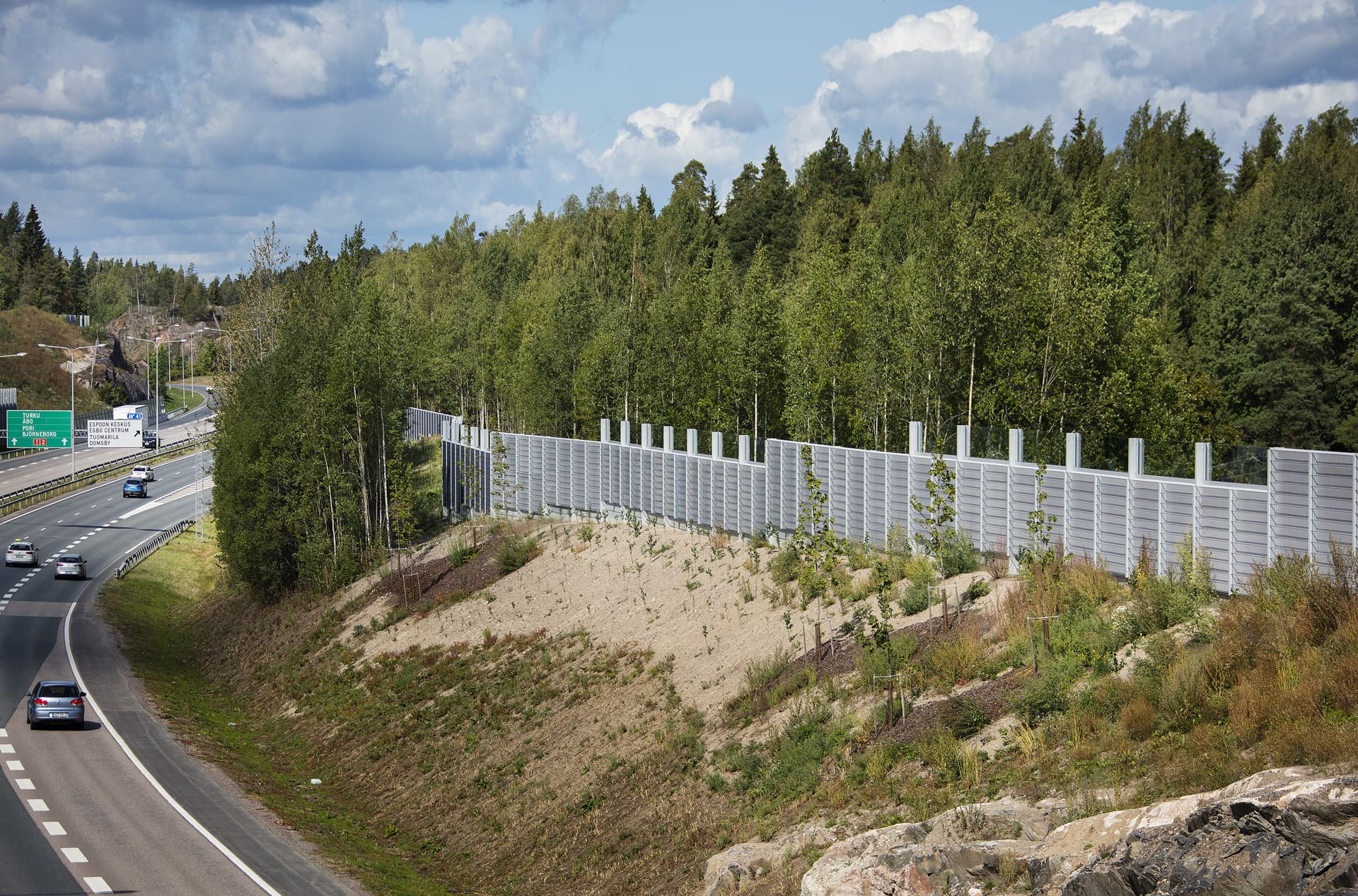Repair and reinforcement work at the Lauttasaari bridge, Helsinki 2019-2020
The project, in which the steel box girder bridge was repaired and reinforced in 2019-2020, can be shortly described in three words: a huge undertaking.
M. Rautio Oy started to prepare the repair work for the bridge, originally completed in 1969, by measuring old structures and making as-built drawings based on the measurements.
“Based on previous experience, we assumed that the welded seams shown in the original drawings and the bolt locations were probably not correct,” explains Markku Rautio.
Their assumptions were correct, and so an intensive design period began, requiring input from everyone.
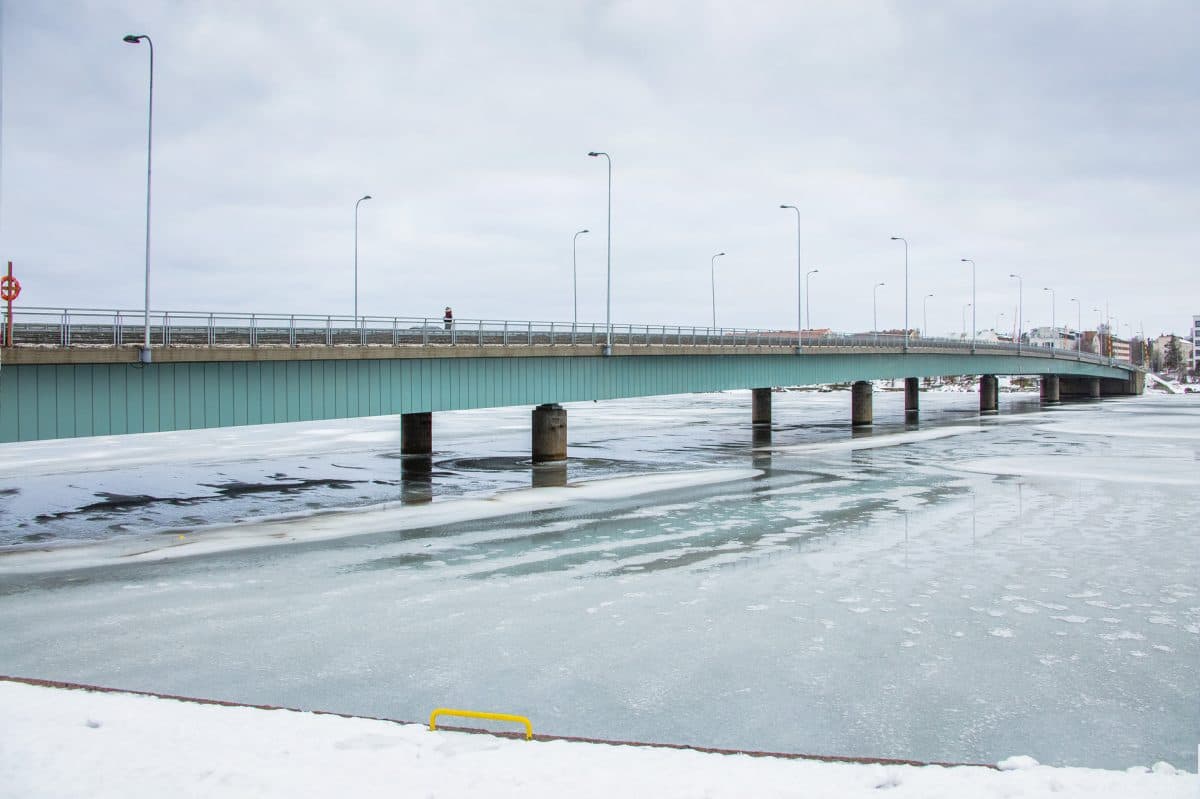
This is how Jüri Marist, project engineer at M. Rautio Oy, describes the early phases of the site: “The work involved a very tight schedule for design. We spent a lot of time drawing, at all hours of the day and night. We considered different options, solutions, and plans. The project had to be made implementation-friendly. We had to find out how to install things into places that first seemed impossible. We spent a lot of nights working late”.
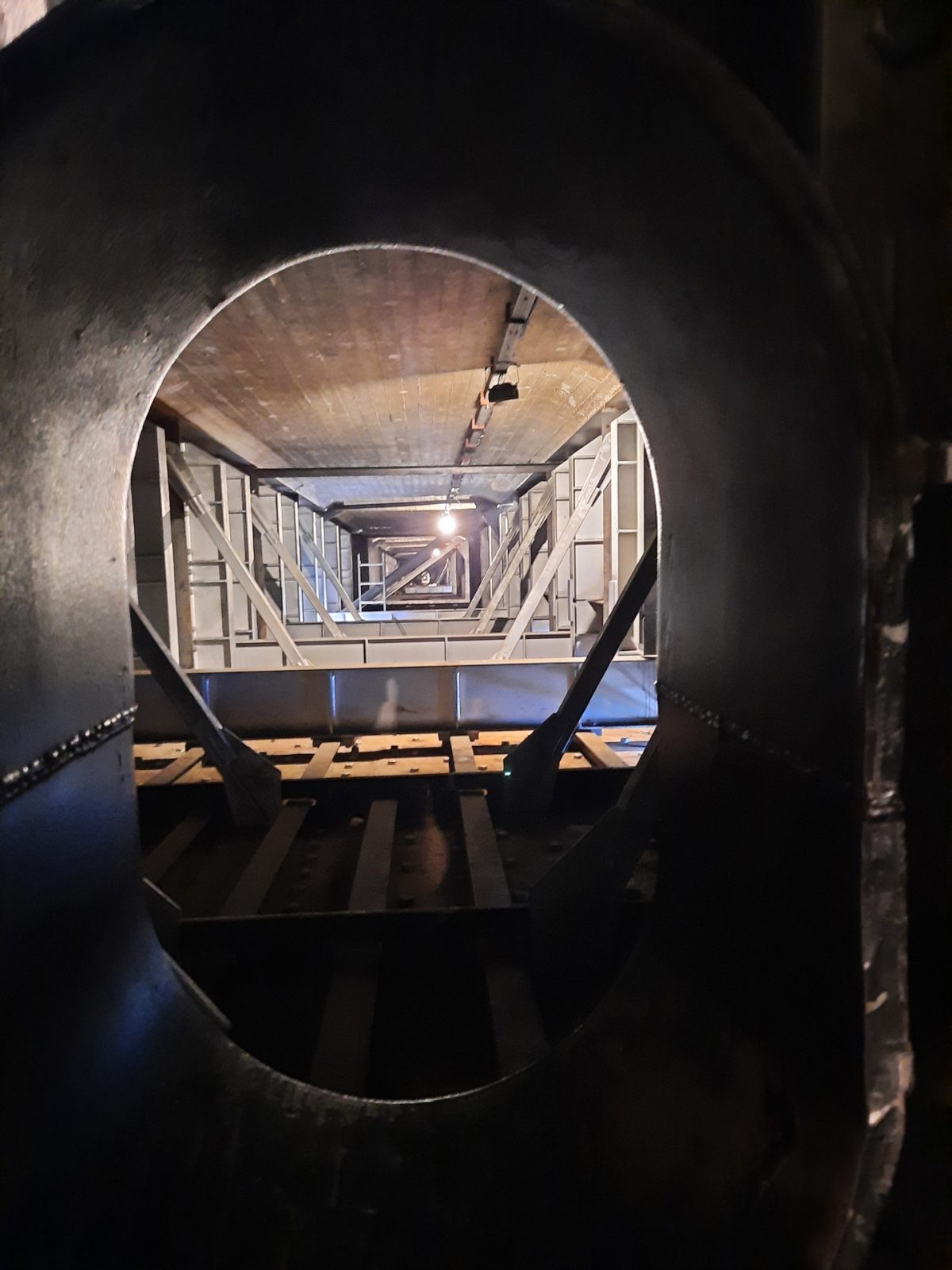
The circumstances within and outside the bridge make the project more demanding
“I went inside the bridge in August. My first thought was damn, it’s dark in here. Questions began to arise,” says Marist.
Not only was it dark, the passages inside the bridge were also very narrow. We had to get the required tools and strengthening components into the bridge boxes through oval-shaped holes that were only 700 mm high. In practice, you had to half-crawl through the hole. Finally, approximately 600 tonnes of steel were carried in with elbow grease alone.
This is how installer and welder Marko Ainali describes the work phases: “We carried the parts and tools by hand. There were no other options”.
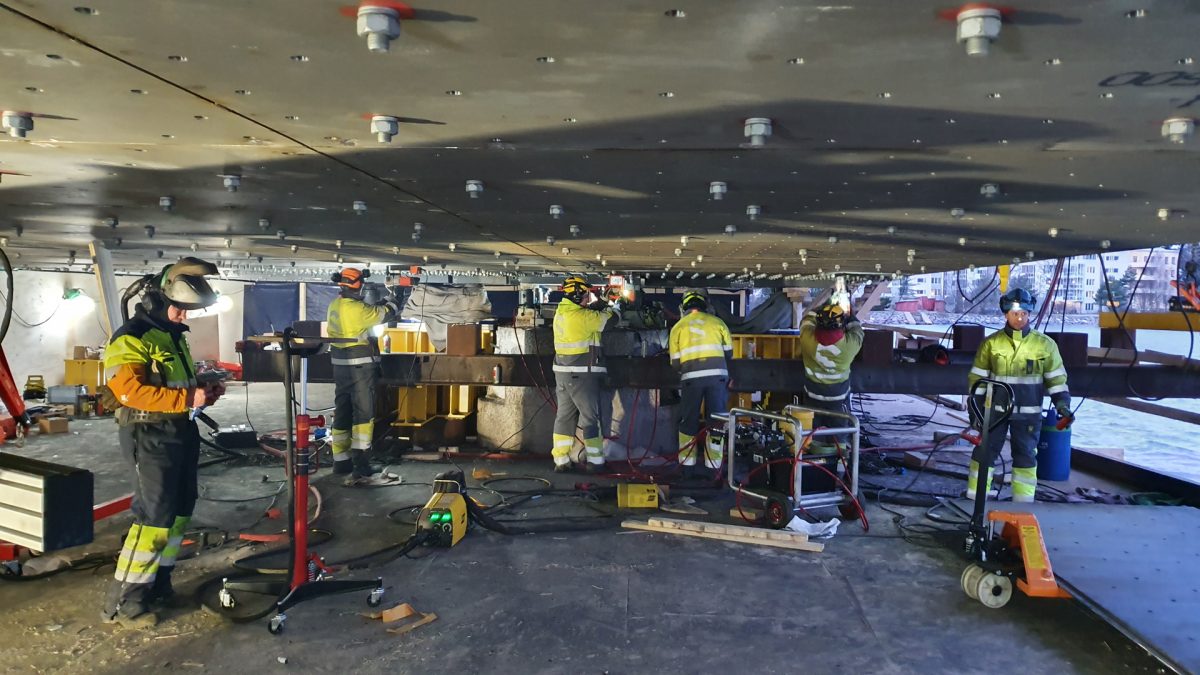
Thousands of bolted joints in a giant bolt panel beneath the bridge
The largest steel plates used for reinforcing weighed up to 900 kg. They were attached to the lower part of the bridge from scaffolds. We used for this our own hauling and lifting equipment, as well as a work raft specifically built for this purpose. A lot of planning was needed in order to align the big and heavy plates with the old structure, and the work had to be conducted with precision and an uncompromising attitude. The installers had a huge work load. They spent long working days toiling underneath and within the bridge. 68,000 bolted connections alone were completed.
Welding was made challenging by the confined space, darkness, and wind
Forward planning and unusual arrangements were needed in order to conduct welding work within the closed boxes of the inner parts of the bridge. We ensured that there was sufficient ventilation and visibility in the boxes by always having ventilators on. These removed gas that was formed during welding. When the welders were working in the boxes, they also had their personal gas alarm devices with them.
“We hadn’t used such devices before,” says Marko Ainali.
Mag flux-cored welding was also used for the welding work on the bridge’s outside parts. The driving wind at sea had the biggest impact on the welding work conducted outside, which is usual for bridges. The areas to be welded were protected with tarpaulins and temporary plywood walls.
“Of course the weather was often bad when we were under the bridge. When there was a storm, it destroyed the scaffolds between the land abutment and the first pier several times,” adds Ainali, describing the conditions on the bridge.
In the end, some things went more easily than expected, concludes Jüri Marist.
“I think we learned by doing. As the work advanced, we refined our ideas until they reached their final shape. After all, we were able to proceed quite quickly with the work.”
The main contractor conducting the work to repair and reinforce Lauttasaari bridge was the building company Kreate. The work was finished in December 2020. The bridge was opened to traffic on the 11th of December 2020.

